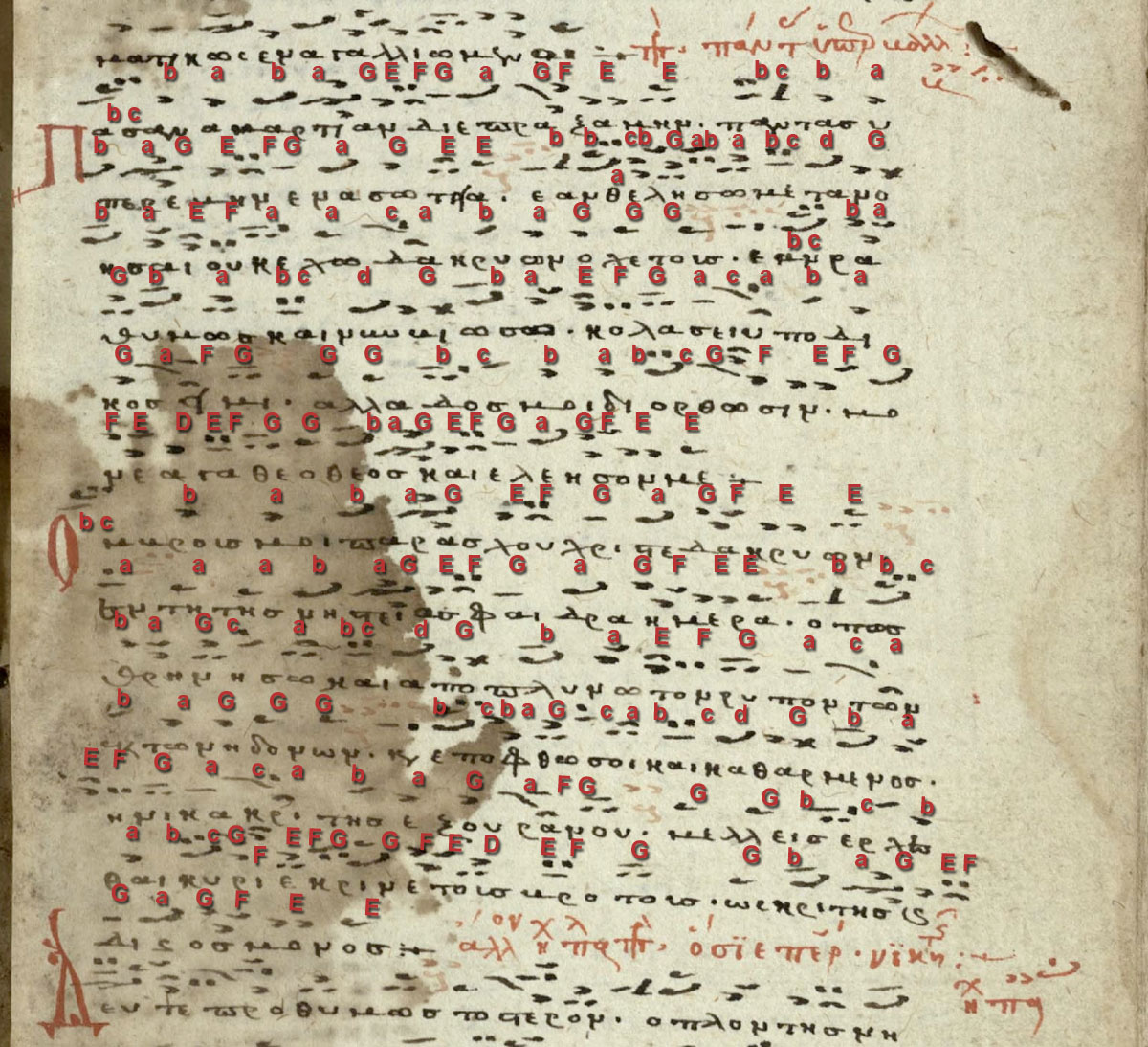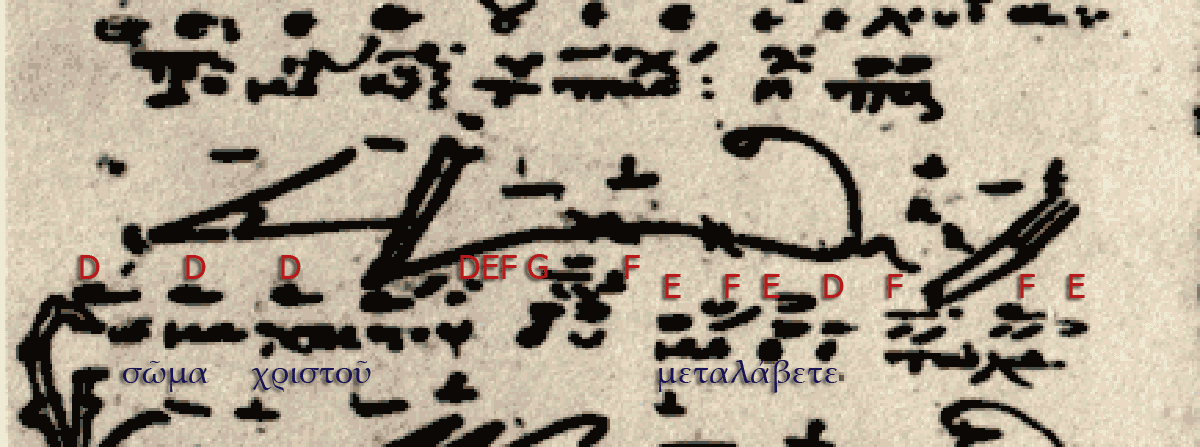|
Petros Bereketis
Petros Bereketis ( el, Πέτρος Μπερεκέτης) or Peter the Sweet (Πέτρος ο Γλυκής) was one of the most innovative musicians of 17th-century Constantinople (Ottoman period). He, together with Panagiotes the New Chrysaphes, Balasios the Priest and Germanos Bishop of New Patras was one of the most influential figures in the evolution of the Byzantine psaltic art following the fall of Constantinople in 1453, although he never was associated with the Patriarchate in Fener. For many years, he served as the protopsaltis (first cantor) of church St. Constantine of the Hypsomatheia district close to the Marmara coast. During his lifetime, which is approximately supposed to be between 1665 and 1725, while Chrysanthos mentioned that he served there in the time of the Archon Protopsaltis at the Great Church of Christ of Panagiotis Halatzoglou and his Lampadarios John Trapezountios (1727-1748). Education Nothing is known about his real life time, so that Gregorios ... [...More Info...] [...Related Items...] OR: [Wikipedia] [Google] [Baidu] |
Polyeleos
The Polyeleos is a festive portion of the Matins or All-Night Vigil service as observed on higher-ranking feast days in the Eastern Orthodox, Eastern Lutheran, and Byzantine Rite Catholic Churches. The Polyeleos is considered to be the high point of the service, and contains the reading of the Matins Gospel. Because of its liturgical importance, settings for the Polyeleos have been composed by Sergei Rachmaninoff and others. The name derives from Greek Πολυέλεος (pl. Πολυέλεοι), meaning "of much mercy", because of the repetition in one of the Polyeleoi of the phrase "ὅτι εἰς τὸν αἰῶνα τὸ ἔλεος αὐτοῦ" (''hoti eis ton aiōna to eleos autou''), meaning "because forever astsHis mercy"), Psalms Specifically, the Polyeleos consists of Psalms 134 and 135 (Septuagint numbering; King James Version: Psalms and ), which are solemnly chanted in a festive melody, with refrains Alleluia chanted between each verse. The refrain for Psalm 134 i ... [...More Info...] [...Related Items...] OR: [Wikipedia] [Google] [Baidu] |
Idiomelon
(Medieval Greek: from , 'unique' and , 'melody'; Church Slavonic: , )—pl. ''idiomela''—is a type of sticheron found in the liturgical books used in the Eastern Orthodox Church, the Eastern Catholic Churches which follow the Byzantine Rite, and many other Orthodox communities like Old Believers. are unique compositions, while or —sing. , or (Medieval Greek: , Church Slavonic: , )—were used to create other hymns by a composition over the 's melody and following the poetic meter provided by the musical rhythm. The genre composed over these was characterised as or (Medieval Greek: 'similar to', Church Slavonic: , ). Definition of ''idiomelon'', ''avtomelon'' and ''prosomoion'' The hymn category can only be understood in comparison with and . Already in the older book Tropologion each melody of a certain hymn was classified by a modal signature of the Byzantine octoechos—the eight-mode system as it had developed in Constantinople, Damascus, Jerusalem, and in man ... [...More Info...] [...Related Items...] OR: [Wikipedia] [Google] [Baidu] |
Communion (chant)
The Communion ( la, communio; grc-gre, κοινωνικόν, ''koinonikon'') is a refrain sung with psalm recitation during the distribution of the Eucharist in the Divine Liturgy or Mass. As chant it was connected with the ritual act of Christian communion. The koinonikon cycle of the Divine Liturgy in Orthodox rites According to Dimitri Conomos the koinonikon (κοινωνικόν), as it is sung as an elaborated communion chant during the Divine Liturgy, has derived from an early practice of psalm recitation similar to Western liturgies, when the ''Koinonikon'' served as a troparion. The oldest troparion which was used for communion, was "Γεύσασθε καὶ ἴδετε" ("O taste and see that the Lord is good", Ps. 33:9). It was supposed to symbolize the last supper celebrated on Maundy Thursday. During the 5th century, when the Divine Liturgy of the Presanctified Gifts had established and this communion chant became associated with it, the custom spread over the Lenten ... [...More Info...] [...Related Items...] OR: [Wikipedia] [Google] [Baidu] |
Cherubikon
The Cherubikon (Greek: χερουβικόν) is the usual Cherubic Hymn (Greek: χερουβικὸς ὕμνος, Church Slavonic ) sung at the Great Entrance of the Byzantine liturgy. History Origin The cherubikon was added as a troparion to the Divine Liturgy under Emperor Justin II (565 – 578) when a separation of the room where the gifts are prepared from the room where they are consecrated made it necessary that the Liturgy of the Faithful, from which those not baptised had been excluded, start with a procession. This procession is known as the Great Entrance, because the celebrants have to enter the choir by the altar screen, later replaced by the iconostasis. The hymn symbolically incorporates those present at the liturgy into the presence of the angels gathered around God's throne.Parry (1999), p. 117. The chant genre '' offertorium'' in traditions of Western plainchant was basically a copy of the Byzantine custom, but there it was a proper mass chant which chang ... [...More Info...] [...Related Items...] OR: [Wikipedia] [Google] [Baidu] |
Mingana Collection
The Mingana Collection of Middle Eastern manuscripts, comprising over 3,000 documents, is held by the University of Birmingham's Cadbury Research Library. History In 1924 Alphonse Mingana, an ethnic Assyrian, made the first of three trips to the Middle East to collect ancient Syriac and Arabic manuscripts. The expedition was sponsored by John Rylands Library and Dr Edward Cadbury, the Quaker owner of the famous chocolate factory at Bournville, Birmingham, who Mingana had met through Rendel Harris. A number of the manuscripts he returned with formed the basis of the Mingana Collection at Woodbrooke College. Mingana added to the collection with manuscripts acquired on two further trips to the Middle East in 1925 and 1929, both financed solely by Edward Cadbury. In 1932 Mingana moved back to Birmingham to focus on cataloguing the collection. The first catalogue describing 606 Syriac manuscripts was published in 1933. A further volume published in 1936 describes 120 Christian Arabi ... [...More Info...] [...Related Items...] OR: [Wikipedia] [Google] [Baidu] |



